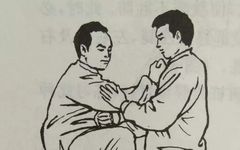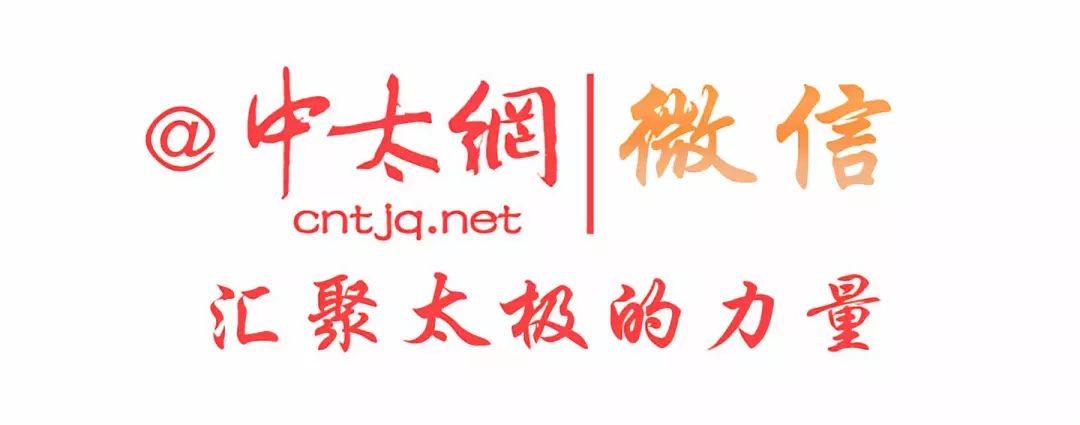
Chen Zhaokui, a master of Chen-style Tai Chi, once said, “The essence of Tai Chi is martial arts; every movement of the hands and feet has its purpose. The hand shapes cannot resemble a five-fingered fork nor the orchid hand of Du Jinfang. Different hand shapes are used according to different applications. The palm techniques of traditional Chen-style Tai Chi are a major component of Chen-style Tai Chi. They are precise and intricate, with more detailed and exquisite movements, and their variations are endless. Often, a single form contains multiple variations of palm techniques and striking methods, known as “one form, multiple techniques.”At the same time, a single palm technique can evolve into multiple techniques, known as “one technique, multiple forms.” The changes and transitions between these palm techniques and forms will leave opponents feeling bewildered and uncertain. I will take advantage of this to subdue the enemy.Here are the 23 palm techniques of Chen-style Tai Chi, 6 types of compound palm techniques, along with their practice methods and applications!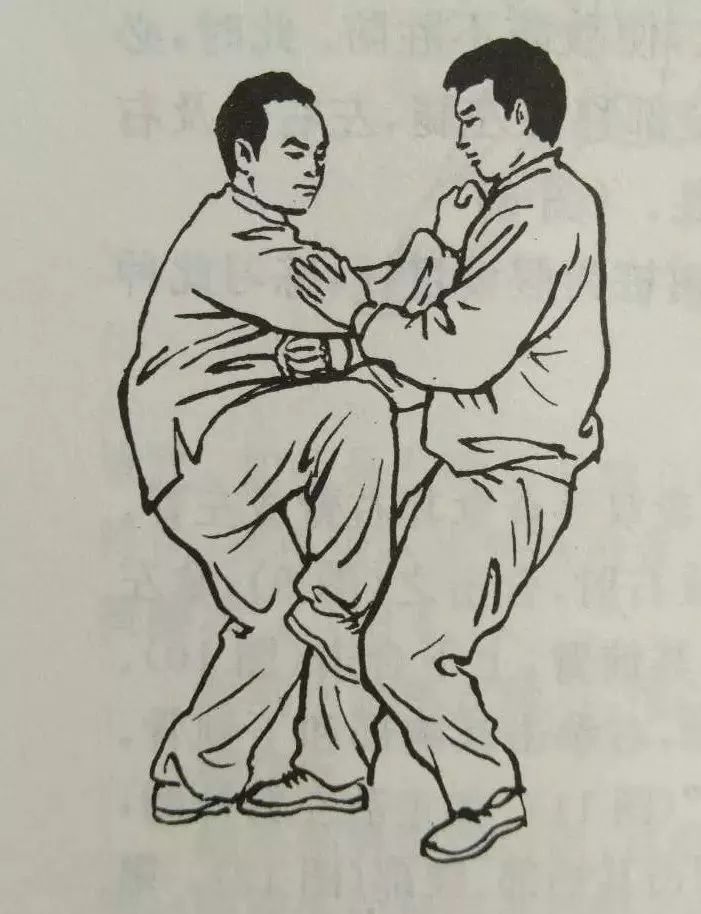 For example, the technique of Xiao Qin Da (Small Capture Strike). After covering the hand with an elbow strike, if the enemy’s right foot is forward and they use their right hand to defend against my punch, I will take the opportunity to turn right and pull their right wrist towards my upper right, while my left hand attacks their ribs or abdomen. The enemy has no choice but to withdraw their right leg, soften their right hand, and use their left hand to press against my left hand’s attack to escape the passive situation.However, I will shift my center of gravity upward, and as my left hand moves forward with my center of gravity, I will use an upward palm strike to hit the enemy’s throat and face, while my right hand will follow the momentum to pull and entangle the enemy’s right wrist with my left hand, simultaneously stepping forward with my right foot to stomp (or step forward to insert into the enemy’s groin or step forward to entangle the enemy’s left leg) at the weak point of the enemy’s left calf, forming an upper and lower combined attack to subdue the enemy. If the enemy turns their waist to the left, leaning on their right shoulder, softening my hand and using their foot to push against me, I will use my left elbow to neutralize the enemy’s shoulder lean and follow their force to continue to grasp their wrist, while using the waist’s right turn force and the inward force of my right knee to create a cutting force downward, and the centrifugal force of my upper body accelerating to the right, using my left elbow to enhance the effect of the centrifugal force, causing the enemy to fall.
For example, the technique of Xiao Qin Da (Small Capture Strike). After covering the hand with an elbow strike, if the enemy’s right foot is forward and they use their right hand to defend against my punch, I will take the opportunity to turn right and pull their right wrist towards my upper right, while my left hand attacks their ribs or abdomen. The enemy has no choice but to withdraw their right leg, soften their right hand, and use their left hand to press against my left hand’s attack to escape the passive situation.However, I will shift my center of gravity upward, and as my left hand moves forward with my center of gravity, I will use an upward palm strike to hit the enemy’s throat and face, while my right hand will follow the momentum to pull and entangle the enemy’s right wrist with my left hand, simultaneously stepping forward with my right foot to stomp (or step forward to insert into the enemy’s groin or step forward to entangle the enemy’s left leg) at the weak point of the enemy’s left calf, forming an upper and lower combined attack to subdue the enemy. If the enemy turns their waist to the left, leaning on their right shoulder, softening my hand and using their foot to push against me, I will use my left elbow to neutralize the enemy’s shoulder lean and follow their force to continue to grasp their wrist, while using the waist’s right turn force and the inward force of my right knee to create a cutting force downward, and the centrifugal force of my upper body accelerating to the right, using my left elbow to enhance the effect of the centrifugal force, causing the enemy to fall.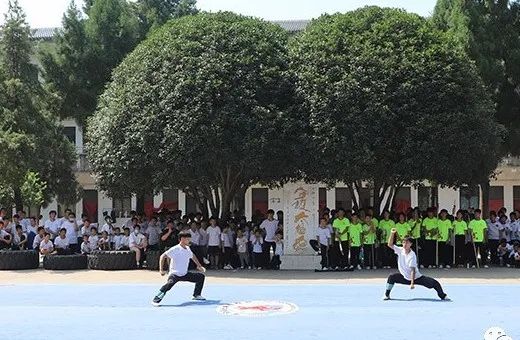 At this moment, the enemy must withdraw their left foot while softening both hands, and use their left hand to intercept my right hand while using their right hand to defend against my left hand to protect themselves from falling. At this time, I will take the opportunity to step forward to insert into the enemy’s groin or entangle their right leg, while my right hand strikes upward, and my left hand cuts down to their ribs or lower abdomen. The enemy can only use their right hand to neutralize my downward cutting palm. I will then shift my center of gravity to the left, increasing the outward force of my right hand, while my left hand lifts from the enemy’s inner side upward, concentrating the force from below to above on the outer side of my fingers or palm to strike the enemy.At this moment, the enemy can only neutralize my left hand from the inside out, but I will use their neutralizing force to draw them in front of me and grasp their right hand with my right hand. Simultaneously, I will slightly turn my waist to the right, bend my right knee, and with both hands moving left and right, I will push down to throw the enemy to the right and backward. If the enemy softens their right hand to prevent falling, I will use my left elbow to press against their right arm, push their left hand away with my right hand, and use both palms to switch from reverse to forward to push upward toward the enemy’s chest, while my legs can use a twisting step to get closer to the enemy, knocking them down to the ground. It can be seen that the technique of Xiao Qin Da contains 13 variations of palm shapes and techniques, including Peng (Ward Off), Lu (Roll Back), Cai (Pluck), Na (Seize), An (Press), Ta (Push), Qie (Cut), Chuan (Pierce), Tui (Push), and various kicking, throwing, and grappling techniques, with endless variations in multiple directions, interlocking with one another, and full of mysteries. This is not merely a discussion of palm techniques; it is truly an enjoyment of the art of palm techniques.
At this moment, the enemy must withdraw their left foot while softening both hands, and use their left hand to intercept my right hand while using their right hand to defend against my left hand to protect themselves from falling. At this time, I will take the opportunity to step forward to insert into the enemy’s groin or entangle their right leg, while my right hand strikes upward, and my left hand cuts down to their ribs or lower abdomen. The enemy can only use their right hand to neutralize my downward cutting palm. I will then shift my center of gravity to the left, increasing the outward force of my right hand, while my left hand lifts from the enemy’s inner side upward, concentrating the force from below to above on the outer side of my fingers or palm to strike the enemy.At this moment, the enemy can only neutralize my left hand from the inside out, but I will use their neutralizing force to draw them in front of me and grasp their right hand with my right hand. Simultaneously, I will slightly turn my waist to the right, bend my right knee, and with both hands moving left and right, I will push down to throw the enemy to the right and backward. If the enemy softens their right hand to prevent falling, I will use my left elbow to press against their right arm, push their left hand away with my right hand, and use both palms to switch from reverse to forward to push upward toward the enemy’s chest, while my legs can use a twisting step to get closer to the enemy, knocking them down to the ground. It can be seen that the technique of Xiao Qin Da contains 13 variations of palm shapes and techniques, including Peng (Ward Off), Lu (Roll Back), Cai (Pluck), Na (Seize), An (Press), Ta (Push), Qie (Cut), Chuan (Pierce), Tui (Push), and various kicking, throwing, and grappling techniques, with endless variations in multiple directions, interlocking with one another, and full of mysteries. This is not merely a discussion of palm techniques; it is truly an enjoyment of the art of palm techniques.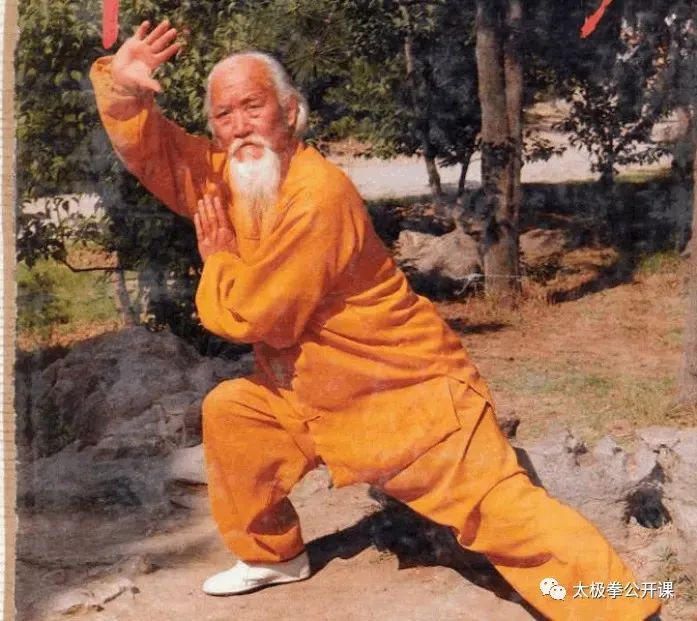 In the martial arts community, various styles and techniques have always placed great importance on palm techniques. Some even form styles centered around the palm, such as Youshen Bagua Zhang (Swimming Body Eight Trigram Palm). This is because the palm, whether for offense or defense, is our frontline and first line of defense, which is why it is commonly said that “the hands are two doors.” From a fitness perspective, the palms contain many important meridians and acupoints that connect with the entire body. The movement of the hands is linked to various internal organs, as the saying goes, “The ten fingers connect to the heart.” The Laogong (Labor Palace) acupoint on the hand is particularly important for the circulation of Qi and blood.The human palm is the result of millions of years of human labor evolution and is an important tool for humans to interact with and transform nature and society. Therefore, we must not neglect or take palm techniques lightly. Understanding the connotations of palm techniques, their internal energy, and the external movement paths, force points, and their variations is of great significance for mastering the traditional old frame of Chen-style Tai Chi comprehensively.
In the martial arts community, various styles and techniques have always placed great importance on palm techniques. Some even form styles centered around the palm, such as Youshen Bagua Zhang (Swimming Body Eight Trigram Palm). This is because the palm, whether for offense or defense, is our frontline and first line of defense, which is why it is commonly said that “the hands are two doors.” From a fitness perspective, the palms contain many important meridians and acupoints that connect with the entire body. The movement of the hands is linked to various internal organs, as the saying goes, “The ten fingers connect to the heart.” The Laogong (Labor Palace) acupoint on the hand is particularly important for the circulation of Qi and blood.The human palm is the result of millions of years of human labor evolution and is an important tool for humans to interact with and transform nature and society. Therefore, we must not neglect or take palm techniques lightly. Understanding the connotations of palm techniques, their internal energy, and the external movement paths, force points, and their variations is of great significance for mastering the traditional old frame of Chen-style Tai Chi comprehensively.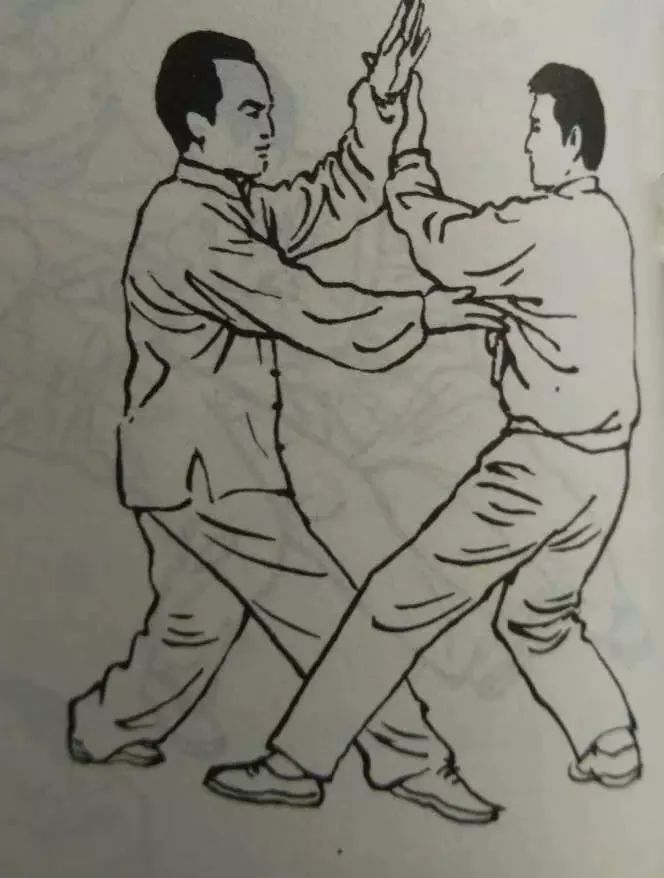 Types and Essentials of Palm TechniquesTeacher Ma Hong pointed out: “There are changes between forward and reverse entanglement in palm techniques. In forward entanglement, the little finger leads and the thumb closes, highlighting the little fish mound, while in reverse entanglement, it is the opposite. In the Lu (Roll Back) style, the palm is like a tile, and in forward entanglement, the middle finger, index finger, and ring finger can be raised and flipped back. In the An (Press) style, the fingers can be raised to highlight the root of the palm. In the Na (Seize) style, the five fingers can be virtually closed towards the palm, etc. However, all these variations must ensure that the Qi reaches the middle finger’s belly or that the strength is relaxed to the little finger’s tip.”On the premise of mastering the basic palm shape of Chen-style Tai Chi—Waluo Zhang (Tile Palm)—with the key points being “the thumb and little finger tips meet, the Laogong acupoint is contained, and the other three fingers are slightly extended, with a rounded Tiger Gate, and the strength reaches the middle finger’s belly,” we classify the palm techniques as follows:1. Chuan Zhang (Piercing Palm)Divided into single-hand and double-hand piercing palms, with single-hand piercing further divided into left and right piercing palms, either in forward or reverse entanglement, with the arms bending and extending, and the hand rotating while the forearm describes a vertical circle. The piercing palm movement must be quick and powerful, with the shoulders sinking, elbows dropping, and chest and waist relaxed, driven by the waist, with force penetrating to the fingertips. Examples include the first movement of Liu Feng Si Bi (Six Seals Four Closures) connecting to the first movement of Dan Bian (Single Whip), the first movement of Lan Zha Yi (Lazy Tie Coat), the fifth movement of Shantong Bi (Flash Through Arm), the third movement of Yunu Chuan Suo (Jade Girl Weaving), and the fifth movement of Dan Bian (Single Whip) with the left hand performing single piercing palm, and the two paths of single piercing palms to the left and right, such as Bai She Tu Xin (White Snake Spits Out Tongue).
Types and Essentials of Palm TechniquesTeacher Ma Hong pointed out: “There are changes between forward and reverse entanglement in palm techniques. In forward entanglement, the little finger leads and the thumb closes, highlighting the little fish mound, while in reverse entanglement, it is the opposite. In the Lu (Roll Back) style, the palm is like a tile, and in forward entanglement, the middle finger, index finger, and ring finger can be raised and flipped back. In the An (Press) style, the fingers can be raised to highlight the root of the palm. In the Na (Seize) style, the five fingers can be virtually closed towards the palm, etc. However, all these variations must ensure that the Qi reaches the middle finger’s belly or that the strength is relaxed to the little finger’s tip.”On the premise of mastering the basic palm shape of Chen-style Tai Chi—Waluo Zhang (Tile Palm)—with the key points being “the thumb and little finger tips meet, the Laogong acupoint is contained, and the other three fingers are slightly extended, with a rounded Tiger Gate, and the strength reaches the middle finger’s belly,” we classify the palm techniques as follows:1. Chuan Zhang (Piercing Palm)Divided into single-hand and double-hand piercing palms, with single-hand piercing further divided into left and right piercing palms, either in forward or reverse entanglement, with the arms bending and extending, and the hand rotating while the forearm describes a vertical circle. The piercing palm movement must be quick and powerful, with the shoulders sinking, elbows dropping, and chest and waist relaxed, driven by the waist, with force penetrating to the fingertips. Examples include the first movement of Liu Feng Si Bi (Six Seals Four Closures) connecting to the first movement of Dan Bian (Single Whip), the first movement of Lan Zha Yi (Lazy Tie Coat), the fifth movement of Shantong Bi (Flash Through Arm), the third movement of Yunu Chuan Suo (Jade Girl Weaving), and the fifth movement of Dan Bian (Single Whip) with the left hand performing single piercing palm, and the two paths of single piercing palms to the left and right, such as Bai She Tu Xin (White Snake Spits Out Tongue).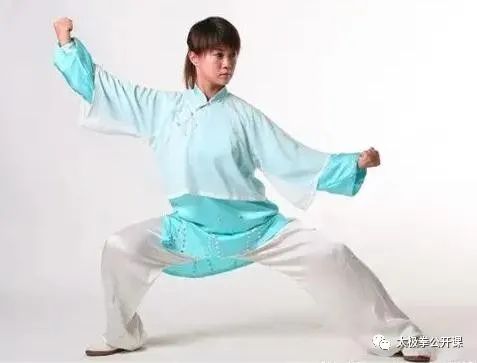 2. Liao Zhang (Lifting Palm)Divided into single-hand and double-hand lifting. Generally, it adopts reverse entanglement to forward entanglement for front lifting and upward lifting. When lifting, the arms are slightly bent, elbows drop, shoulders sink, muscles relax, and the shoulder joint serves as the axis. The lifting palm and stepping down must be completed simultaneously, with quick and powerful movements, and internal strength reaching the fingertips and wrist. Examples include Jin Gang Dao Dui (Diamond Hammering) with the left hand lifting upward from reverse to forward entanglement, or double hands lifting upward from reverse to forward entanglement, as well as the first movement of Zhong Pan (Middle Plate) retreating and crossing the tiger.3. Tui Zhang (Pushing Palm)Can be divided into single pushing palm and double pushing palm. When storing energy, inhale, retract the abdomen, and lift the anus; when releasing energy, exhale. In pushing palm, the force starts from the heel, moving from the legs to the waist, relaxing the hips, sinking the waist, containing the chest, rounding the crotch, and sinking the shoulders and elbows. The arms should not be too straight, and one must concentrate fully, allowing the Qi to reach all four extremities, with internal strength directed to the root of the palm, making the movements round, lively, powerful, and elastic. This palm technique is used frequently in forms such as Liu Feng Si Bi, Xie Xing (Diagonal Movement), Xiao Qin Da, Bao Tou Tui Shan (Embrace Head Push Mountain), Yunu Chuan Suo, Shuang Tui Zhang (Double Pushing Palm), and the chain cannon in the second path.4. Ta Zhang (Sinking Palm)Ta Zhang is the most commonly used palm technique in the traditional old frame, fully reflecting the characteristics of Chen-style Tai Chi’s downward sinking and outward rolling. It is also an intermediate link for the conversion between forward and reverse entanglement. When releasing this force, the entire body must be relaxed, the center of gravity sinking into the soles of the feet, the hips sinking, and the chest and waist folding. The intention leads the Qi, and the Qi drives the force, allowing the energy from the dantian to reach the root and outer side of the palm, exploding with inch power, either penetrating the opponent’s body or moving their root. In practical application, it is often combined with pushing palms, possessing an incredibly powerful destructive force.
2. Liao Zhang (Lifting Palm)Divided into single-hand and double-hand lifting. Generally, it adopts reverse entanglement to forward entanglement for front lifting and upward lifting. When lifting, the arms are slightly bent, elbows drop, shoulders sink, muscles relax, and the shoulder joint serves as the axis. The lifting palm and stepping down must be completed simultaneously, with quick and powerful movements, and internal strength reaching the fingertips and wrist. Examples include Jin Gang Dao Dui (Diamond Hammering) with the left hand lifting upward from reverse to forward entanglement, or double hands lifting upward from reverse to forward entanglement, as well as the first movement of Zhong Pan (Middle Plate) retreating and crossing the tiger.3. Tui Zhang (Pushing Palm)Can be divided into single pushing palm and double pushing palm. When storing energy, inhale, retract the abdomen, and lift the anus; when releasing energy, exhale. In pushing palm, the force starts from the heel, moving from the legs to the waist, relaxing the hips, sinking the waist, containing the chest, rounding the crotch, and sinking the shoulders and elbows. The arms should not be too straight, and one must concentrate fully, allowing the Qi to reach all four extremities, with internal strength directed to the root of the palm, making the movements round, lively, powerful, and elastic. This palm technique is used frequently in forms such as Liu Feng Si Bi, Xie Xing (Diagonal Movement), Xiao Qin Da, Bao Tou Tui Shan (Embrace Head Push Mountain), Yunu Chuan Suo, Shuang Tui Zhang (Double Pushing Palm), and the chain cannon in the second path.4. Ta Zhang (Sinking Palm)Ta Zhang is the most commonly used palm technique in the traditional old frame, fully reflecting the characteristics of Chen-style Tai Chi’s downward sinking and outward rolling. It is also an intermediate link for the conversion between forward and reverse entanglement. When releasing this force, the entire body must be relaxed, the center of gravity sinking into the soles of the feet, the hips sinking, and the chest and waist folding. The intention leads the Qi, and the Qi drives the force, allowing the energy from the dantian to reach the root and outer side of the palm, exploding with inch power, either penetrating the opponent’s body or moving their root. In practical application, it is often combined with pushing palms, possessing an incredibly powerful destructive force. This palm technique is widely used in forms, with typical applications in the sixth movement of Lan Zha Yi, the sixth movement of Dan Bian, Xie Xing, Yun Shou (Cloud Hands), Qian Deng (Forward Kick), Shuang Tui Zhang, Liu Feng Si Bi, etc.5. An Zhang (Pressing Palm)Pressing palm is performed under the premise of containing the chest, sinking the waist, and relaxing the hips, with the shoulders sinking (relaxed shoulders) and elbows dropping, guiding internal Qi and strength into the palm, pressing down with the palm facing downward, with the arms slightly bent, coordinating the upper and lower movements, as if pressing a ball under water. Typical applications include the left and right Jin Ji Du Li (Golden Rooster Stands on One Leg) style.6. Pi Zhang (Chopping Palm)When using this palm, one must contain the chest, sink the waist, relax the hips, sink the shoulders, and drop the elbows, combining the rotation of the waist and the opening and closing of the chest to direct internal strength to the outer side of the palm. At the same time, one must concentrate mentally, with a vigorous momentum, quick hands and eyes, coordinated movements, and the hands should not be too straight, maintaining Peng (Ward Off) strength in the palm, with the arms and palms moving in sync. When jumping or turning to chop, the turning motion should not pause, but should be quick, powerful, and clean, without dragging. Examples include the vertical chopping palm, as in the sixth movement of Shantong Bi, diagonal chopping palm, Bai He Liang Chi (White Crane Spreads Wings) to the first movement of Xie Xing, and the second diagonal movement.7. Tuo Zhang (Supporting Palm)Divided into single supporting palm and double supporting palm. When extending the palm, the hand moves in a spiral, either forward or reverse, with the palm facing upward, while the shoulders sink (relaxed shoulders), elbows drop, chest contains, waist sinks, and hips relax, avoiding stiffness and tension. The internal strength should reach the root of the palm, and when the strength of the big fish mound rises, the hips must sink, forming a pulling force to align with the yin-yang philosophy of Tai Chi. When releasing strength, it should be stored and then released, with the strength being whole, crisp, and having a sense of surprise. For example, the last movement of the initial collection is the double supporting palm, the first movement of the third Jin Gang Dao Dui is the single supporting palm, and typical examples include the left and right Jin Ji Du Li spiral supporting palm and the double supporting palm during double stomping.
This palm technique is widely used in forms, with typical applications in the sixth movement of Lan Zha Yi, the sixth movement of Dan Bian, Xie Xing, Yun Shou (Cloud Hands), Qian Deng (Forward Kick), Shuang Tui Zhang, Liu Feng Si Bi, etc.5. An Zhang (Pressing Palm)Pressing palm is performed under the premise of containing the chest, sinking the waist, and relaxing the hips, with the shoulders sinking (relaxed shoulders) and elbows dropping, guiding internal Qi and strength into the palm, pressing down with the palm facing downward, with the arms slightly bent, coordinating the upper and lower movements, as if pressing a ball under water. Typical applications include the left and right Jin Ji Du Li (Golden Rooster Stands on One Leg) style.6. Pi Zhang (Chopping Palm)When using this palm, one must contain the chest, sink the waist, relax the hips, sink the shoulders, and drop the elbows, combining the rotation of the waist and the opening and closing of the chest to direct internal strength to the outer side of the palm. At the same time, one must concentrate mentally, with a vigorous momentum, quick hands and eyes, coordinated movements, and the hands should not be too straight, maintaining Peng (Ward Off) strength in the palm, with the arms and palms moving in sync. When jumping or turning to chop, the turning motion should not pause, but should be quick, powerful, and clean, without dragging. Examples include the vertical chopping palm, as in the sixth movement of Shantong Bi, diagonal chopping palm, Bai He Liang Chi (White Crane Spreads Wings) to the first movement of Xie Xing, and the second diagonal movement.7. Tuo Zhang (Supporting Palm)Divided into single supporting palm and double supporting palm. When extending the palm, the hand moves in a spiral, either forward or reverse, with the palm facing upward, while the shoulders sink (relaxed shoulders), elbows drop, chest contains, waist sinks, and hips relax, avoiding stiffness and tension. The internal strength should reach the root of the palm, and when the strength of the big fish mound rises, the hips must sink, forming a pulling force to align with the yin-yang philosophy of Tai Chi. When releasing strength, it should be stored and then released, with the strength being whole, crisp, and having a sense of surprise. For example, the last movement of the initial collection is the double supporting palm, the first movement of the third Jin Gang Dao Dui is the single supporting palm, and typical examples include the left and right Jin Ji Du Li spiral supporting palm and the double supporting palm during double stomping.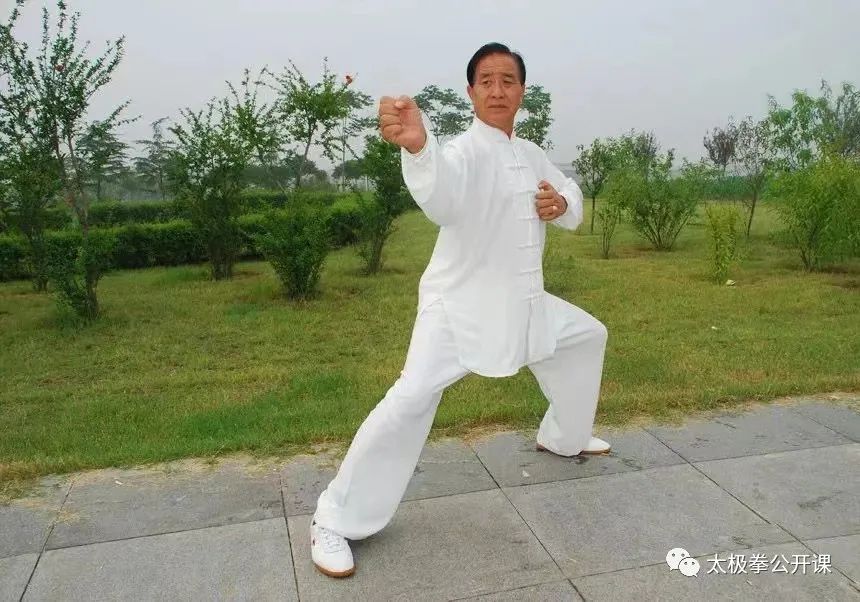 8. Pai Zhang (Slapping Palm)Can be divided into front slapping and side slapping. When slapping, the palm faces downward, the wrist is straight, and internal strength is directed to the palm’s center, with the hand’s entanglement being either forward or reverse. When slapping, it is generally performed in a low stance to store strength, relaxing and kicking the foot while using the palm to slap the foot’s back, requiring quick and powerful movements, and releasing immediately after slapping. Examples include the side slapping in the left and right foot rubbing (side slapping) and the front slapping in the two foot raises.9. Qie Zhang (Cutting Palm)When using this palm, the strength should be directed to the outer side of the palm’s root, and the force should move in a spiral, either forward or reverse. Special attention should be paid to the relaxation and sinking of the shoulders to avoid obstructing the flow of strength. The palm can face upward or downward. In forms, for example, during Da Lu (Big Roll Back), the left hand first moves from reverse entanglement to push out, then changes to forward entanglement to direct the strength to the outer side of the palm to cut downward. This is seen in the eighth movement of Xiao Qin Da and the eighth movement of Zhuang Shou (Turning Hand), where the strength reaches the left hand’s outer side, slightly reversing to cut downward, and in the second movement of Yun Shou, the left hand performs a cutting palm.10. Cha Zhang (Inserting Palm)The arm (single or double) extends from bent to straight, with relaxed shoulders, sinking hips, and combining the opening and closing of the chest, the hand forms a straight palm quickly inserting forward or downward, with strength directed straight to the fingers. One can jump or stomp to increase the downward insertion force. For example, in the middle plate, jumping to open the chest, both hands’ fingertips meet to insert forward and downward, and in the sixth movement of Shantong Bi, the right hand pushes up while the left hand inserts downward.11. Cai Zhang (Plucking Palm)The hand moves in a spiral, with the palm facing downward, coordinating with body movements to direct strength into the palm to control the opponent’s joints. This is seen in the fourth movement of Dao Juan Rong (Reverse Roll), the second movement of Lan Zha Yi, the sixth movement of Shantong Bi, and the fourth movement of Ye Ma Fen Zong (Wild Horse Parts Mane).12. Na Zhang (Seizing Palm)The hand moves in a spiral, with the palm facing outward or forward to the side, coordinating with body movements to place strength in the palm. This is seen in the first movement of the third Jin Gang Dao Dui, the second movement of Lan Zha Yi, and the fourth movement of Ye Ma Fen Zong. This palm technique often combines well with the Lu palm for excellent results.
8. Pai Zhang (Slapping Palm)Can be divided into front slapping and side slapping. When slapping, the palm faces downward, the wrist is straight, and internal strength is directed to the palm’s center, with the hand’s entanglement being either forward or reverse. When slapping, it is generally performed in a low stance to store strength, relaxing and kicking the foot while using the palm to slap the foot’s back, requiring quick and powerful movements, and releasing immediately after slapping. Examples include the side slapping in the left and right foot rubbing (side slapping) and the front slapping in the two foot raises.9. Qie Zhang (Cutting Palm)When using this palm, the strength should be directed to the outer side of the palm’s root, and the force should move in a spiral, either forward or reverse. Special attention should be paid to the relaxation and sinking of the shoulders to avoid obstructing the flow of strength. The palm can face upward or downward. In forms, for example, during Da Lu (Big Roll Back), the left hand first moves from reverse entanglement to push out, then changes to forward entanglement to direct the strength to the outer side of the palm to cut downward. This is seen in the eighth movement of Xiao Qin Da and the eighth movement of Zhuang Shou (Turning Hand), where the strength reaches the left hand’s outer side, slightly reversing to cut downward, and in the second movement of Yun Shou, the left hand performs a cutting palm.10. Cha Zhang (Inserting Palm)The arm (single or double) extends from bent to straight, with relaxed shoulders, sinking hips, and combining the opening and closing of the chest, the hand forms a straight palm quickly inserting forward or downward, with strength directed straight to the fingers. One can jump or stomp to increase the downward insertion force. For example, in the middle plate, jumping to open the chest, both hands’ fingertips meet to insert forward and downward, and in the sixth movement of Shantong Bi, the right hand pushes up while the left hand inserts downward.11. Cai Zhang (Plucking Palm)The hand moves in a spiral, with the palm facing downward, coordinating with body movements to direct strength into the palm to control the opponent’s joints. This is seen in the fourth movement of Dao Juan Rong (Reverse Roll), the second movement of Lan Zha Yi, the sixth movement of Shantong Bi, and the fourth movement of Ye Ma Fen Zong (Wild Horse Parts Mane).12. Na Zhang (Seizing Palm)The hand moves in a spiral, with the palm facing outward or forward to the side, coordinating with body movements to place strength in the palm. This is seen in the first movement of the third Jin Gang Dao Dui, the second movement of Lan Zha Yi, and the fourth movement of Ye Ma Fen Zong. This palm technique often combines well with the Lu palm for excellent results.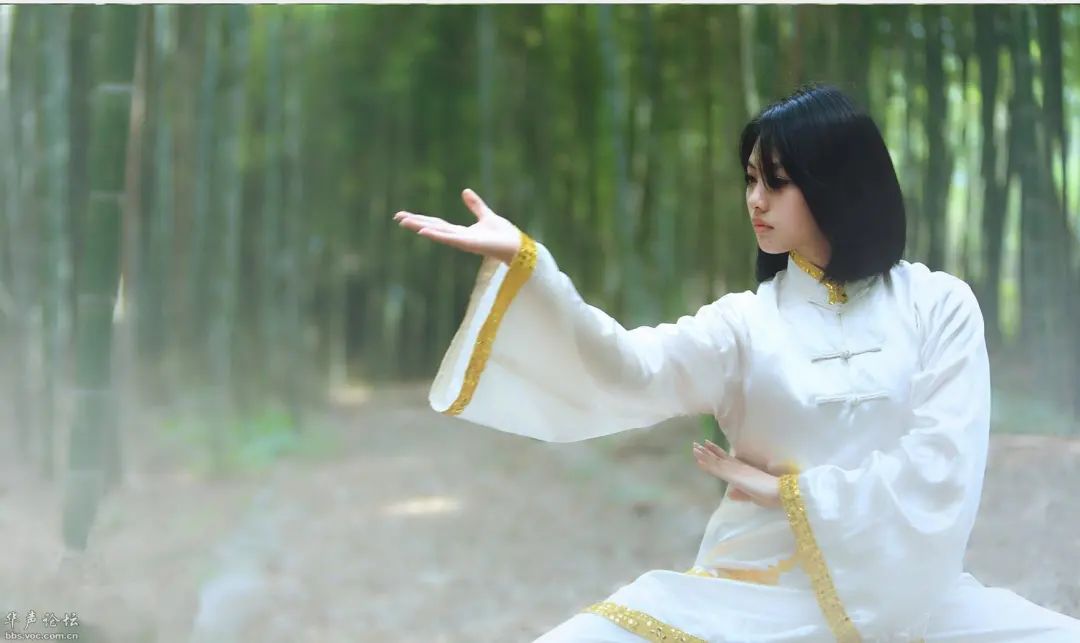 13. Tiao Zhang (Lifting Palm)Using the fingertips to lead the force, lifting the palm upward in a standing circular motion, requiring coordination with body movements, keeping the upper body upright, sinking the shoulders, dropping the elbows, relaxing the hips, and sinking the waist to drive the waist’s force. This is seen in the fourth movement of Xiao Qin Da.14. Peng Zhang (Ward Off Palm)1) He Bi Peng Zhang (Crossed Arm Ward Off Palm)Both arms cross in front of the chest to support a circle, with shoulders sinking and elbows dropping, palms facing outward, coordinating with body movements to maintain support from all directions, which can protect oneself and also combine with hand techniques, elbow techniques, and foot techniques, using the waist as the driving force to rotate the waist and spine, incorporating both seizing and throwing techniques, with immense power. This is seen in the fifth movement of Lan Zha Yi, the first movement of Qian Deng, the second movement of Xiao Qin Da, the fourth movement of Xuan Feng Jiao (Whirlwind Kick), the second movement of Zhuang Shou, and the second movement of the second path in Dao Qi Lin (Reverse Riding Unicorn).2) Dan Bi Peng Zhang (Single Arm Ward Off Palm)The hand moves in a spiral, with one or both hands coordinating with body movements, relaxing the hips, sinking the waist, relaxing the shoulders, and bending the elbows, using the waist to drive, directing internal Qi to the palm’s root, either to the outer side or palm center, pushing outward or to the sides, incorporating seizing and throwing techniques. When applying this palm, special attention must be paid to maintaining the elasticity of the strength. This is seen in the third movement of Zhong Pan, the second movement of the second Liu Feng Si Bi, and the first and second movements of San Huan Zhang (Three Transformations Palm).15. Cuo Zhang (Twisting Palm)Under the guidance of body movements, internal Qi is directed into both palms, with both palms moving from reverse to forward entanglement, with the fingertips facing forward and upward, maintaining a distance of one forearm apart, striking forward and upward. When both arms strike forward and upward, the hips should sink, supporting the Ming Men (Life Gate) to maintain the forward release and backward sinking posture. This is seen in the first movement of Shantong Bi and the last movement of the retreating crossing tiger.16. Jiao Zhang (Twisting Palm)Both wrists cross and connect as one, with both palms transitioning from double reverse to double forward, then back to double reverse, twisting from outside to inside and then from inside to outside. At this moment, one should relax the hips, sink the waist, contain the chest, and drop the shoulders and elbows, coordinating the folding of the chest and waist while using the dantian to drive. This is seen in the last movement of the left kick during the turn, the first movement of the retreating crossing tiger, and the turning twisting palm.17. Zhua Na Zhang (Claw Seizing Palm)The first and second joints bend, with five fingers spread open, the finger joints bending inward to form a claw shape, soft inside and hard outside, yet elastic, with internal strength converging inward, possessing the function of seizing tendons and capturing pulses. This is seen in the last movement of the retreating elbow press, the second movement of Zhong Pan, and the left hand of the fixed form of the covering hand elbow strike.
13. Tiao Zhang (Lifting Palm)Using the fingertips to lead the force, lifting the palm upward in a standing circular motion, requiring coordination with body movements, keeping the upper body upright, sinking the shoulders, dropping the elbows, relaxing the hips, and sinking the waist to drive the waist’s force. This is seen in the fourth movement of Xiao Qin Da.14. Peng Zhang (Ward Off Palm)1) He Bi Peng Zhang (Crossed Arm Ward Off Palm)Both arms cross in front of the chest to support a circle, with shoulders sinking and elbows dropping, palms facing outward, coordinating with body movements to maintain support from all directions, which can protect oneself and also combine with hand techniques, elbow techniques, and foot techniques, using the waist as the driving force to rotate the waist and spine, incorporating both seizing and throwing techniques, with immense power. This is seen in the fifth movement of Lan Zha Yi, the first movement of Qian Deng, the second movement of Xiao Qin Da, the fourth movement of Xuan Feng Jiao (Whirlwind Kick), the second movement of Zhuang Shou, and the second movement of the second path in Dao Qi Lin (Reverse Riding Unicorn).2) Dan Bi Peng Zhang (Single Arm Ward Off Palm)The hand moves in a spiral, with one or both hands coordinating with body movements, relaxing the hips, sinking the waist, relaxing the shoulders, and bending the elbows, using the waist to drive, directing internal Qi to the palm’s root, either to the outer side or palm center, pushing outward or to the sides, incorporating seizing and throwing techniques. When applying this palm, special attention must be paid to maintaining the elasticity of the strength. This is seen in the third movement of Zhong Pan, the second movement of the second Liu Feng Si Bi, and the first and second movements of San Huan Zhang (Three Transformations Palm).15. Cuo Zhang (Twisting Palm)Under the guidance of body movements, internal Qi is directed into both palms, with both palms moving from reverse to forward entanglement, with the fingertips facing forward and upward, maintaining a distance of one forearm apart, striking forward and upward. When both arms strike forward and upward, the hips should sink, supporting the Ming Men (Life Gate) to maintain the forward release and backward sinking posture. This is seen in the first movement of Shantong Bi and the last movement of the retreating crossing tiger.16. Jiao Zhang (Twisting Palm)Both wrists cross and connect as one, with both palms transitioning from double reverse to double forward, then back to double reverse, twisting from outside to inside and then from inside to outside. At this moment, one should relax the hips, sink the waist, contain the chest, and drop the shoulders and elbows, coordinating the folding of the chest and waist while using the dantian to drive. This is seen in the last movement of the left kick during the turn, the first movement of the retreating crossing tiger, and the turning twisting palm.17. Zhua Na Zhang (Claw Seizing Palm)The first and second joints bend, with five fingers spread open, the finger joints bending inward to form a claw shape, soft inside and hard outside, yet elastic, with internal strength converging inward, possessing the function of seizing tendons and capturing pulses. This is seen in the last movement of the retreating elbow press, the second movement of Zhong Pan, and the left hand of the fixed form of the covering hand elbow strike.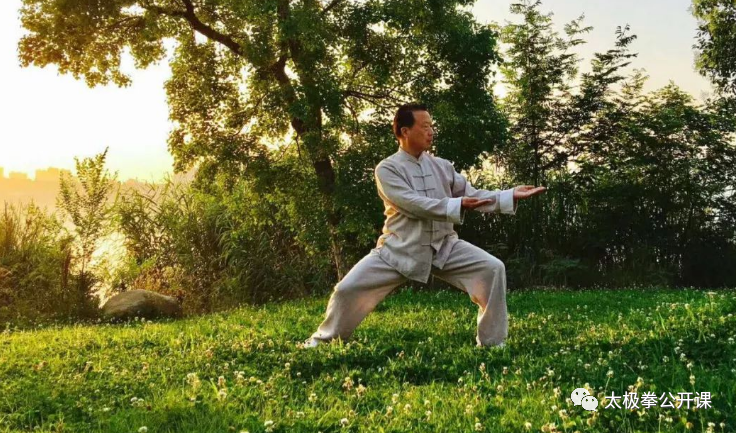 18. Mo Zhang (Wiping Palm)Divided into double wiping and single wiping palms, which can also be divided into flat wiping and standing wiping. During operation, one must relax the hips, sink the waist, and lead the force upward, maintaining an upright posture. Both hands or a single hand wipe entirely driven by the waist, with internal Qi and strength reaching the palm or fingertips. Other martial arts’ wiping palms generally move downward along a flat arc, while Chen-style Tai Chi’s wiping palm moves in a slight spiral, as seen in the first movement of Zhong Pan connecting to Bai He Liang Chi and the first movement of Zhuang Shou in the second path.19. Bao Zhang (Embracing Palm)Both palms are shaped like holding a ball, with palms facing each other, arms naturally bent, shoulders sinking, elbows dropping, and the shoulders, hips, elbows, and knees aligned, with the waist driving the rotation of both arms. Both hands can perform seizing, lifting, pressing, or rotating, with the legs using the ground’s power, relaxing the hips, sinking the waist, and the movements should be continuous, coordinated, round, and powerful. This palm is often used in throwing and seizing techniques, as seen in the first movement of the Crossed Hands, the first movement of Xiao Qin Da, the sixth movement of Shantong Bi, and the second movement of Shuang Zhen Jiao (Double Stamping Foot).20. Fen Zhang (Separating Palm)Both palms simultaneously rise or press down in reverse entanglement, with palms facing outward, arms supporting a circle, and fingertips symmetrical. During the movement, one must pay attention to relaxing the hips, sinking the waist, maintaining an upright posture, and the legs transmitting the ground’s power to the palm’s root or fingertips, fully embodying the spiral entanglement strength. This is seen in the first movement of the initial collection, the first movement of the right kick, and the retreating crossing tiger.21. He Zhang (Joining Palm)Both palms come together in front of the chest, with wrists crossed and fingertips facing upward, looking at both hands, while sinking the shoulders and dropping the elbows, containing the chest and sinking the waist, leading the force upward while sinking the energy down, with Qi sinking to the dantian, supporting the Ming Men from behind, concentrating fully, and internal strength reaching the outer side or root of both palms in a posture resembling a child bowing to Guanyin. This is seen in the first movement of the back folding lean, the first movement of the right kick, the crossed hands, and Lan Zha Yi.
18. Mo Zhang (Wiping Palm)Divided into double wiping and single wiping palms, which can also be divided into flat wiping and standing wiping. During operation, one must relax the hips, sink the waist, and lead the force upward, maintaining an upright posture. Both hands or a single hand wipe entirely driven by the waist, with internal Qi and strength reaching the palm or fingertips. Other martial arts’ wiping palms generally move downward along a flat arc, while Chen-style Tai Chi’s wiping palm moves in a slight spiral, as seen in the first movement of Zhong Pan connecting to Bai He Liang Chi and the first movement of Zhuang Shou in the second path.19. Bao Zhang (Embracing Palm)Both palms are shaped like holding a ball, with palms facing each other, arms naturally bent, shoulders sinking, elbows dropping, and the shoulders, hips, elbows, and knees aligned, with the waist driving the rotation of both arms. Both hands can perform seizing, lifting, pressing, or rotating, with the legs using the ground’s power, relaxing the hips, sinking the waist, and the movements should be continuous, coordinated, round, and powerful. This palm is often used in throwing and seizing techniques, as seen in the first movement of the Crossed Hands, the first movement of Xiao Qin Da, the sixth movement of Shantong Bi, and the second movement of Shuang Zhen Jiao (Double Stamping Foot).20. Fen Zhang (Separating Palm)Both palms simultaneously rise or press down in reverse entanglement, with palms facing outward, arms supporting a circle, and fingertips symmetrical. During the movement, one must pay attention to relaxing the hips, sinking the waist, maintaining an upright posture, and the legs transmitting the ground’s power to the palm’s root or fingertips, fully embodying the spiral entanglement strength. This is seen in the first movement of the initial collection, the first movement of the right kick, and the retreating crossing tiger.21. He Zhang (Joining Palm)Both palms come together in front of the chest, with wrists crossed and fingertips facing upward, looking at both hands, while sinking the shoulders and dropping the elbows, containing the chest and sinking the waist, leading the force upward while sinking the energy down, with Qi sinking to the dantian, supporting the Ming Men from behind, concentrating fully, and internal strength reaching the outer side or root of both palms in a posture resembling a child bowing to Guanyin. This is seen in the first movement of the back folding lean, the first movement of the right kick, the crossed hands, and Lan Zha Yi.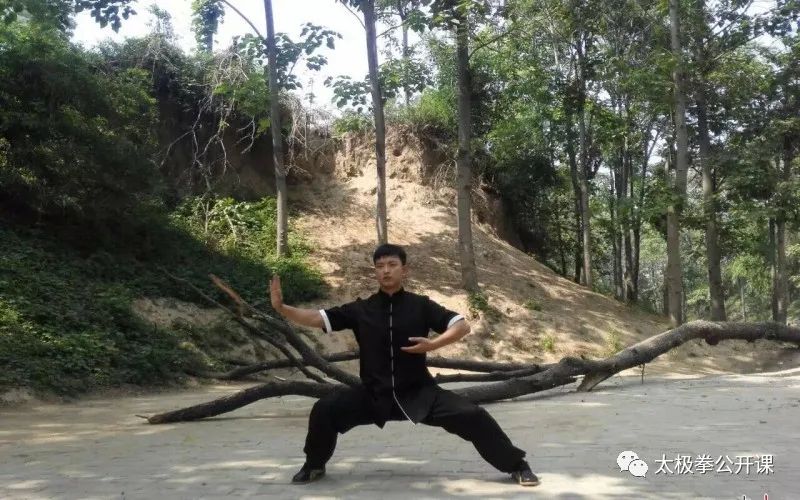 22. Diao Na Zhang (Hooking Palm)The wrist bends, with five fingers hooking toward the wrist, forming a round tiger mouth, with internal Qi directed to the fingers, penetrating to the finger pads. This is the main palm shape of the Na style. There are two types: vertical hooking and horizontal hooking. In vertical hooking, the palm faces upward, while in horizontal hooking, it is the opposite. This is frequently applied in forms such as the sixth movement of Lan Zha Yi, the fourth and fifth movements of Liu Feng Si Bi, the first to fourth movements of Dan Bian, the first movement of the covering hand elbow strike, the first movement of the crossed hands, the third movement of the retreating elbow press, the sixth movement of Zhong Pan, the jumping diagonal movement in the second path, and the straight line in the well cable.23. Pu Mian Zhang (Face Slapping Palm)Internal Qi and strength reach the fingers, slapping the face quickly and powerfully, combining hardness and softness. In actual combat, this often involves both hands cooperating, such as using the right hand to lift and entangle the enemy’s right arm while the left hand strikes their face, or it can be done with a single hand. This is seen in the first movement of Xie Xing, the first movement of the right foot rubbing, and the fourth movement of Shantong Bi where the left arm reverses and flips to attack the enemy’s face.
22. Diao Na Zhang (Hooking Palm)The wrist bends, with five fingers hooking toward the wrist, forming a round tiger mouth, with internal Qi directed to the fingers, penetrating to the finger pads. This is the main palm shape of the Na style. There are two types: vertical hooking and horizontal hooking. In vertical hooking, the palm faces upward, while in horizontal hooking, it is the opposite. This is frequently applied in forms such as the sixth movement of Lan Zha Yi, the fourth and fifth movements of Liu Feng Si Bi, the first to fourth movements of Dan Bian, the first movement of the covering hand elbow strike, the first movement of the crossed hands, the third movement of the retreating elbow press, the sixth movement of Zhong Pan, the jumping diagonal movement in the second path, and the straight line in the well cable.23. Pu Mian Zhang (Face Slapping Palm)Internal Qi and strength reach the fingers, slapping the face quickly and powerfully, combining hardness and softness. In actual combat, this often involves both hands cooperating, such as using the right hand to lift and entangle the enemy’s right arm while the left hand strikes their face, or it can be done with a single hand. This is seen in the first movement of Xie Xing, the first movement of the right foot rubbing, and the fourth movement of Shantong Bi where the left arm reverses and flips to attack the enemy’s face.
Content sourced from the internet, reprinted for sharing purposes. If there is any infringement, please contact for resolution or deletion.
· Past Reviews ·
The most handsome Tai Chi I have ever seen! Watched it several times.
Practicing boxing without practicing skills is a waste of time! Why is basic skill so important?
Is it true that practicing Tai Chi stops as soon as one sweats?
Discussion on the breathing methods of Ba Duan Jin (Eight Pieces of Brocade) (video teaching, methods, timing, complete breathing)

 Every like you give, I take seriously as a sign of appreciation.
Every like you give, I take seriously as a sign of appreciation.

